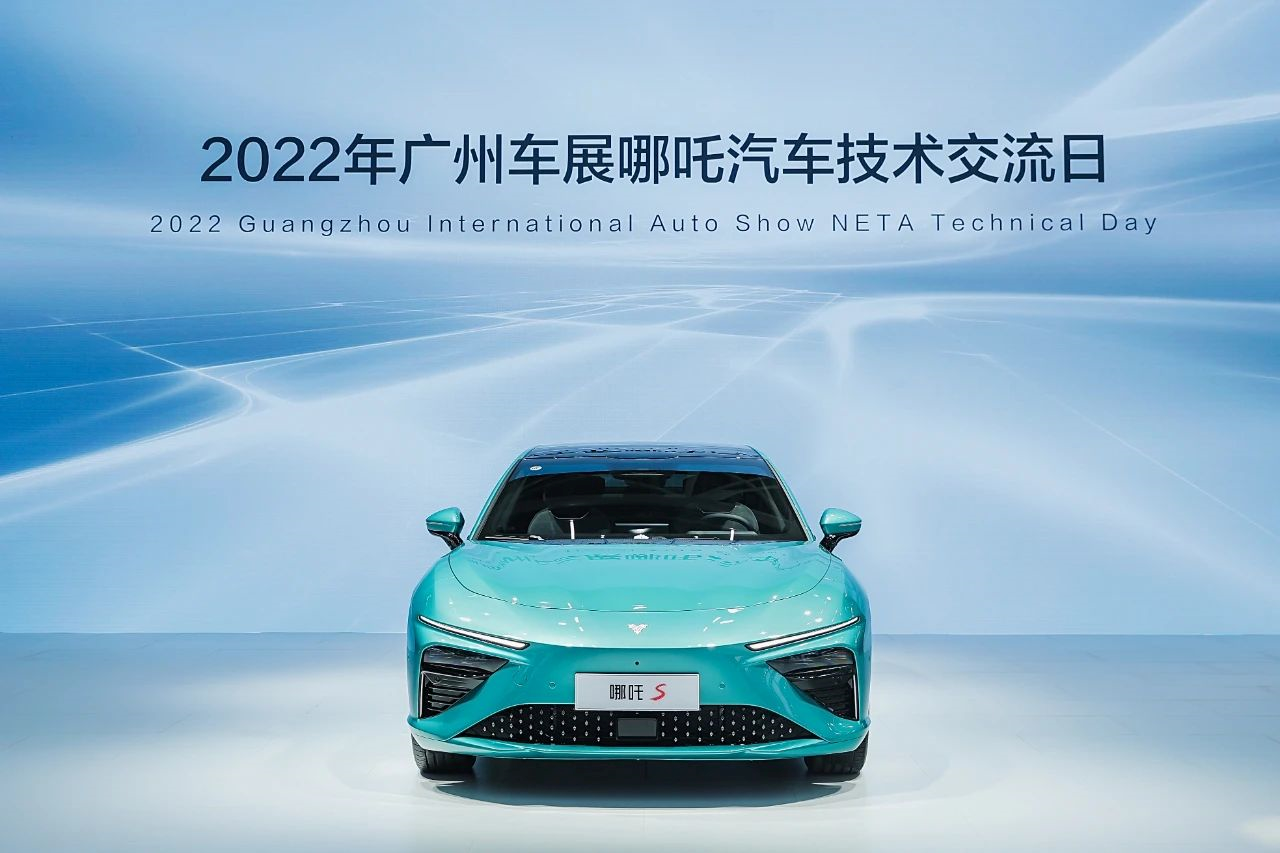Author: Qiu Kaijun
Editor: Qiu Kaijun
At the Guangzhou Auto Show on December 30th, NETA Auto showcased its flagship model, NETA S, and unveiled details about its extended-range, intelligent driving, and smart cockpit technologies, as well as product progress.
The extended-range technology of NETA S is particularly eye-catching. Throughout the entire auto show, it was the only extended-range sedan that can meet daily usage with its ultra-long pure electric range and go on long-distance journeys through refueling. Whether for short or long trips, the extended-range version of NETA S can provide a smooth and fast electric driving experience and a high-level intelligent driving and smart cockpit experience.
The extended-range technology of NETA S embodies the unique character of NETA Auto: it has an ultra-long pure electric range of 310 kilometers, a total mileage of 1,160 kilometers, and can be placed in the narrow front compartment of the sedan. Its efficiency is 5% higher than the industry average, and its noise level is 3-5dB lower than the industry average…
Starting from the needs of general users, a vehicle like NETA S, an extended-range car, can not only satisfy the functions and experience of smart and electric eras, but also avoid the trouble of supplementing energy, making it an excellent choice for the smart electric vehicle era.
Ultra-long Pure Electric Range
An increasing number of users concerned about the automotive market have noticed that new energy vehicles occupy more and more of the C position at auto shows and headlining news in the media.
However, due to the shortcomings of pure electric vehicles in terms of energy supplementation, many users still have concerns.
In this process, the advantages of extended-range electric vehicles for short-distance all-electric drive and long-distance use of gasoline have gradually been recognized by consumers, making it one of the popular new energy technology routes.
However, among the 200,000 yuan-level sports car models, extended-range models have always been a blank spot until the appearance of the extended-range version of NETA S.
In the global development context of the extended-range technology route, there are two extremes: BMW i3 extended-range is one, with a pure electric range of just over 100 kilometers and a small range extender, only suitable for urban commuting. Nissan Note e-power is the other, with a battery of only about 1 kWh and a range extender that is almost always working, also suitable for urban commuting.
The configuration of the extended-range version of NETA S is very different. It is closer to the characteristics of pure electric vehicles, and also allows it to compete with fuel cars in terms of energy supplementation and range ability – which allows consumers to seamlessly transition to the pure electric driving era.
This is just right for user needs. Because ordinary users do not travel long distances in their daily lives, pure electric travel is sufficient for them, and they need to be more economical for daily use, and occasional long-distance travel demands a solution.The NETAS, under CLTC conditions, has a pure electric range of 310 kilometers, which not only is the longest in its class, but also the longest among all extended-range models. This setup is based on user demand. Generally speaking, 90\% of users drive 60 kilometers daily, and the 310-kilometer pure electric range can support five days of pure electric travel during the workweek for users. If the vehicle owner has a charging station at home, the daily energy cost is only about one seventh of that of a similarly sized gasoline vehicle, significantly reducing usage costs.
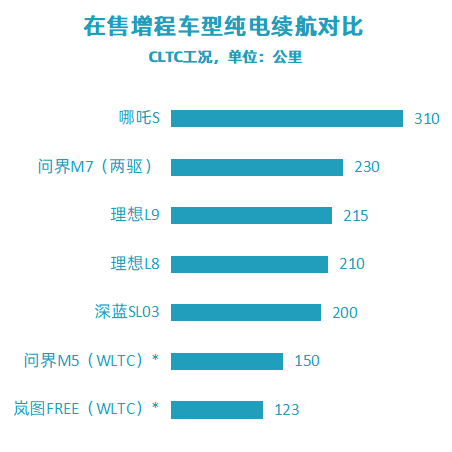
For users who cannot install a charging station at home, the NETAS extended-range version’s 310-kilometer pure electric range is a perfect fit—charging once a week at public charging stations is generally acceptable in terms of time and cost.
In addition, the NETAS extended-range version has a total range of 1160 kilometers, which makes refueling possible for long-distance travel. This setup saves users a significant amount of energy replenishment time compared to pure electric vehicles, especially when waiting in long lines at charging stations during long holidays. As vacation time is already precious, saving time on refueling allows users to spend more time with family, enjoying their time together.
Based on scenarios for short-distance electric use and long-distance fuel use, NETA automaker has also developed two key technologies and four operating modes to improve efficiency and driving experience.
One of these two key technologies is the “safety guard” operating technology, which is also a running mode. Under special circumstances, such as severe shortage of power, extreme low temperatures, or charging and discharging faults of the power battery, the NETAS extended-range version will automatically switch to the safety running mode to provide an extra layer of security for users.
The other technology is intelligent “predictive energy management” based on “human-vehicle-road”. This technology enables the NETAS extended-range version to flexibly call on battery-powered or extended-range power generation according to different needs, improving energy efficiency.
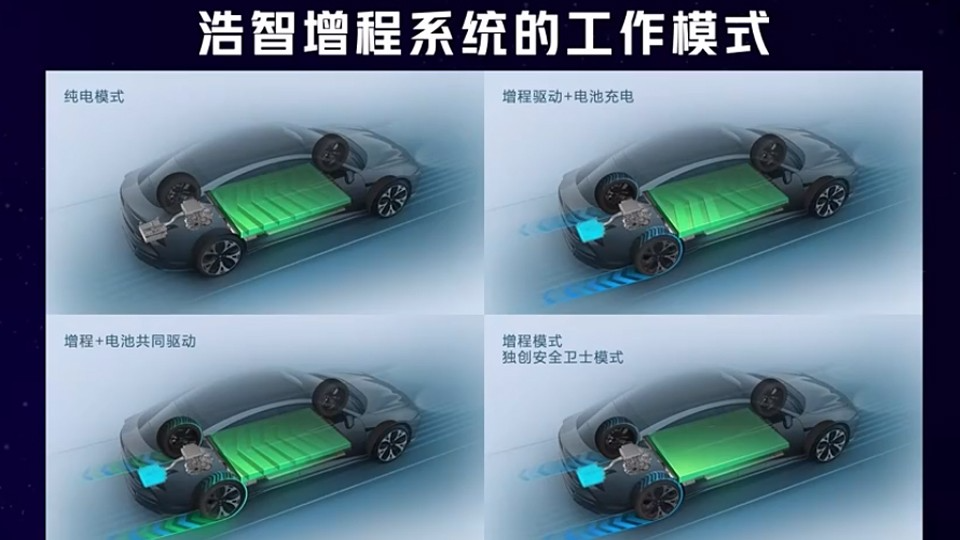
Based on intelligent “predictive energy management”, NETA S extended-range version has four operating modes. In addition to the safety guard mode mentioned earlier, there are also pure electric mode, range extender plus battery drive mode, and range extender drive plus battery charging mode.
The pure electric mode is aimed at scenarios where the battery is fully charged and the travel distance is not long. At this time, the NETA S extended-range version is like a pure electric car, and users are powered entirely by the battery, mainly meeting the daily city commuting needs.
The range extender plus battery drive mode is aimed at scenarios where the vehicle needs high power drive, such as sudden acceleration or uphill driving, so both the range extender and the battery are used together.
The range extender drive plus battery charging mode is aimed at situations where the battery is running low, while the vehicle is also driving steadily. Part of the electricity generated by the range extender is used to drive the vehicle, and the rest is stored in the battery to gradually increase the level of electricity.
From the definition and mode setting perspective of the extended-range model, NETA Automotive deeply understands user scenarios and needs, and then proposes requirements for research and development and design. This is what makes the NETA S extended-range version have seemingly unique but practical pure electric + range extension mileage and mode calibration.
Of course, there is a prerequisite here, which is that the range extender of NETA Automotive must be able to adjust flexibly according to demand. Therefore, NETA Automotive independently developed the range extender and range extender control function.
Independent R&D of Range Extender
Some opponents believe that range extension technology belongs to outdated technology. In fact, range extenders are more complicated than engines. Moreover, there are many engine suppliers, but range extender suppliers are very few, and their technical strength is not strong. Car companies with pursuits need to develop range extenders on their own.
The range extender consists of three parts: engine, generator, and generator controller. Therefore, one of the difficulties in developing the range extender is integration, especially for the NETA S sports coupe model with a small front compartment space.
Through independent research and development, NETA Automotive has developed a highly efficient, compact 1.5L three-in-one range extender, which can achieve a rated power generation of 40 kW at 3500 rpm.
Its primary feature is highly integrated and compact.
The NETA range extender assembly has a length, width, and height of only 758.7mm × 513.7mm × 606.8mm, which is 5-10\% smaller than the range extenders on the market, and is suitable for the NETA S front compartment space. It can be said to be the range extender with the highest integration and the smallest layout space requirement currently available.Secondly, because it is forward development aimed at the range extender, NETA range extender has been simplifying the components and reducing costs by 10% since its design.
In conventional range extender, the engine and generator are independent and connected through gears. However, in integrated design, the engine’s flywheel and the generator’s rotor can be integrated, which is equivalent to the engine without the flywheel.
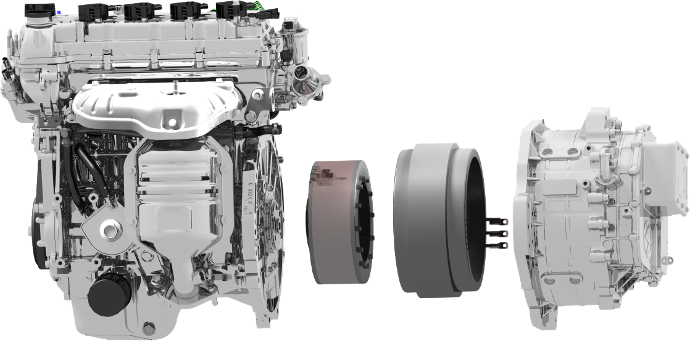
In addition, since the engine and generator are directly connected, the generator does not need bearings and shafts, which saves a critical component.
The generator needs to match a generator controller. If it is in procurement mode, they are separate and need to be connected by high-voltage wiring harnesses and high-voltage connectors. However, with self-development design, the two can be integrated, eliminating these high-voltage components.
These designs not only reduce the use of components and reduce the cost of the range extender, but also reduce the overall dimensions of the range extender.
The third feature of the NETA range extender is high efficiency. The difference between the range extender engine and a regular car engine is that the regular car engine needs to output power for all working conditions, from starting to high speed, to drive the vehicle, and the high-efficiency range is very narrow; the range extender engine works specifically to drive the generator and can adjust the high-efficiency range to the most suitable power range desired by the car manufacturer.
Thus, NETA Motors “aligns” the high-efficiency range of the generator with the high-efficiency range of the engine, especially in the 5kW to 25kW working conditions that the NETA S range extender most commonly requires, achieving the best performance in the industry, and the efficiency in this range is 5% higher than the industry average.
In the past, NVH of extended range electric vehicles has often been criticized and even ridiculed as “tractors”. However, the NETA range extender does not have gear noise transmission, the engine has also been specially designed for noise reduction and controlled in the optimal power range, NVH is better than the industry average, and noise is even lower by 3-5dB.
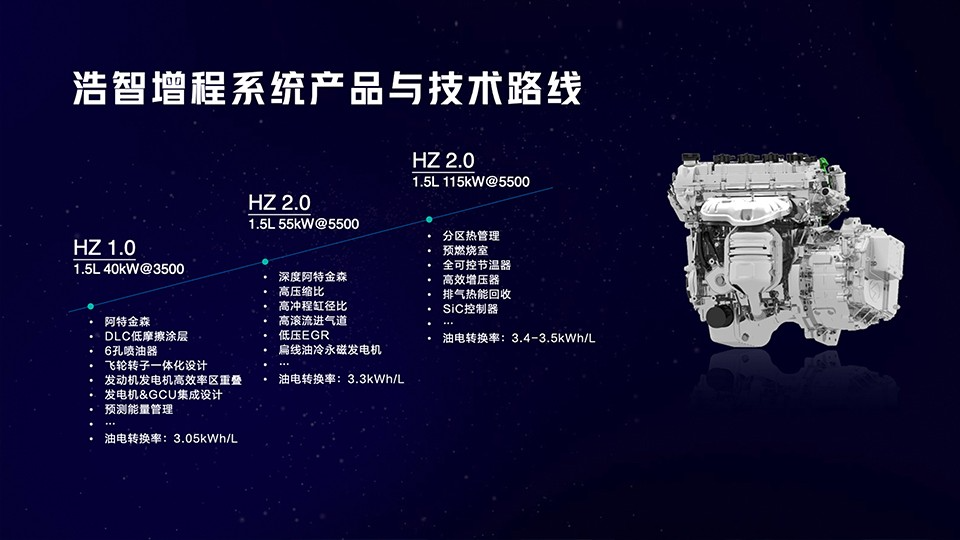
In addition to the range extender that is already in use on the NETA S, NETA Motors is also developing the second generation and planning the third generation of range extenders to meet the needs of small and large extended range electric vehicles. High-turbulence intake channels, partitioned thermal management, pre-chambers (pre-mixed combustion), high-efficiency turbochargers, and exhaust heat recovery technologies will be gradually used in subsequent products.Thus, we can also expect that NETA Motors’ extended-range vehicles may expand from A-level and A0-level to C-level models.
With Extended Range and Intelligent Driving and Cabin
As we enter the era of smart electric vehicles, many users have come to the realization that without intelligence, there is no car.
The NETA S not only provides the only extended-range vehicle in its class as a sedan coupe, but also offers cutting-edge intelligent driving and intelligent cockpit, achieving the best of both worlds with electrification and intelligentization.

In terms of intelligent driving, the NETA S extended-range version comes standard with the NETA self-developed NETA PILOT 3.0 intelligent driving assistance system.
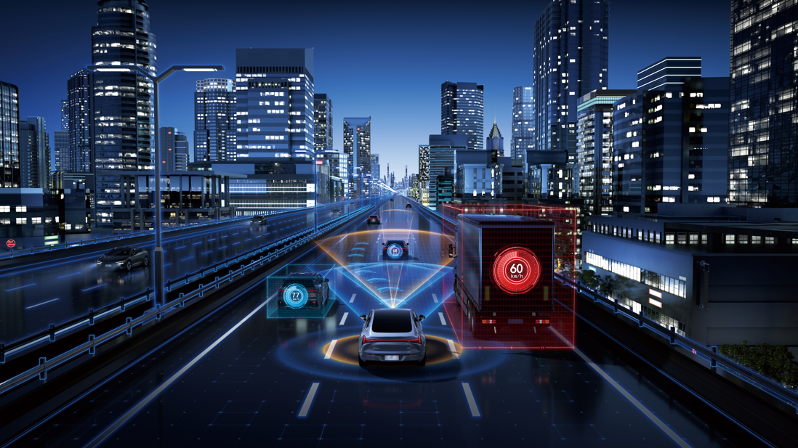
NETA PILOT 3.0 includes four panoramic cameras, five surround-view cameras, two front-view cameras, five millimeter-wave radars, twelve ultrasonic radars, and one high-precision positioning unit at the hardware level.
At the functional level, NETA PILOT 3.0 can realize various intelligent driving assistance functions such as NNP NETA High-speed Navigation Assistance, NTP NETA Memory Parking, and NMS NETA Magic Summoning.
This combination of functions is currently the first tier of intelligent driving functions for mass production, with strong practicality that can reduce accidents and ease driving burdens, meeting users’ expectations for intelligent driving. For example, NNP’s high-speed navigation assistance can achieve intelligent driving between designated points on highways, providing support for independent acceleration, lane change, and entrance/exit ramp driving with the aid of high-precision maps.

In terms of intelligent cockpit, the NETA S extended-range version comes standard with the NETA SPACE intelligent cockpit system. This self-developed system is the first of its kind to be mounted on the NETA S.Using the terminology of traditional components, NETA SPACE “Materials” are definitely sincere and keep up with the highest-end models. It adopts the Qualcomm third-generation Snapdragon cockpit platform 8155 chip – currently the highest-level cockpit chip in mass production. In terms of operating system, NETA SPACE uses BlackBerry QNX real-time operating system, which has more timely responsiveness and higher reliability compared to traditional operating systems.
In the intelligent era, the main way of human-computer interaction has changed to voice. NETA SPACE is equipped with NETA AI voice assistant as standard, which helps the driver to achieve most of the cockpit control functions and some driving functions.
In addition, the basic functions such as in-car communication, car WIFI, driving record, intelligent car search, OTA, Douyin, QQ Music, Tencent video and other content services, mobile remote control… are all available. The mid-range and large models can also achieve high-level functions such as driver monitoring perception, cockpit intelligent visual perception, AI intelligent gesture recognition, and in-car life sign monitoring.
It is worth mentioning that NETA S extended-range version is a rare model among models of the same level in the sedan sector that comes equipped with a co-pilot screen. While male drivers are driving, “the leader” can enjoy “watching dramas” in a calm and peaceful state in the passenger seat. All you have to do is choose the mid-range or large version.
Multi-screen has become the trend in the current intelligent cockpit, but interaction between multiple screens is a difficult point. NETA SPACE uses QNX Hypervisor virtualization technology to help drivers and passengers smoothly interact between AR-HUD, dashboard, central control screen, and co-pilot audio-visual screen.
As a distinctive product in the era of intelligent electric vehicles, the NETA S extended-range version is a B+ level “sports-type intelligent coupe”. Through the self-developed extended-range system, the NETA S extended-range version has entered the pure electric drive era compared to traditional fuel vehicles. Compared with hybrid and plug-in hybrid models, it has a long pure electric endurance, supports daily travel by consumers, and is not inferior in terms of long-distance mileage and energy replenishment.
Moreover, due to NETA Automobile’s value orientation of “making cars for the people” and “technological equality”, the NETA S has larger size and space, higher intelligent driving and cockpit experience, and even better prices than models of the same level.The NETA S extended-range version like this can undoubtedly convince ordinary consumers to confidently enter the era of intelligent electric vehicles from the traditional era of fuel-powered cars.
——END——
This article is a translation by ChatGPT of a Chinese report from 42HOW. If you have any questions about it, please email bd@42how.com.
